Are you planning to visit the Auschwitz concentration and extermination camp? In this article we will provide you with some historical information about the camp’s crematoria.
The Nazis’ atrocious extermination operations were designed to optimize the cost and time of executions, and soon the problem of “disposing” of the huge number of corpses arose.
As you continue reading the article, you will learn about the sad history of the Auschwitz crematoria, their function and other related information, such as their current state.
But before you go any further, let me give you a valuable tip: it is highly recommended to book priority access to avoid the long lines at the entrance; it is also recommended to reserve the accompaniment of an experienced guide, as only in this way will you be able to make the most of this experience with a very strong emotional impact. From the famous inscription “Arbeit Macht Frei” to the inmates’ barracks: every inch inside Auschwitz is an opportunity for growth and deep reflection.

Ticket to Auschwitz-Birkenau (skip the line)
Purchase online. Choose the time of your choice. Visit the prisoner barracks, infamous gas chambers and crematoria on your own.
You can cancel for free up to the day before your visit.
Table of Contents
Brief history of the crematoria at Auschwitz

Auschwitz crematoria: ID 10111826 | Auschwitz © Arsgera | Dreamstime.com
The first executions perpetrated by the Nazis against the Jewish population were organized differently from those of the last period of the regime.
SS soldiers, in fact, shot individual prisoners: but this one-to-one, soldier-to-victim ratio caused no small difficulty for some soldiers, who were disinclined to kill in cold blood.
In addition to this, there were also logistical and economic problems: an efficient solution had to be found to “dispose” of the corpses.
Initially, the Nazis used mass graves dug by the prisoners themselves, but this still involved time and effort, as well as space.
In addition, the numerous munitions used, in the long run, entailed a not inconsiderable cost to the regime’s coffers. For these reasons, plans were made to equip concentration and extermination camps with gas chambers and crematoria, so as to eliminate prisoners more effectively.
The advantages were many: in terms of time , the operation turned out to be much faster. Also in terms of logistics, crematoriums allowed for easy disposal of corpses, even allowing ashes to be utilized in the camps.
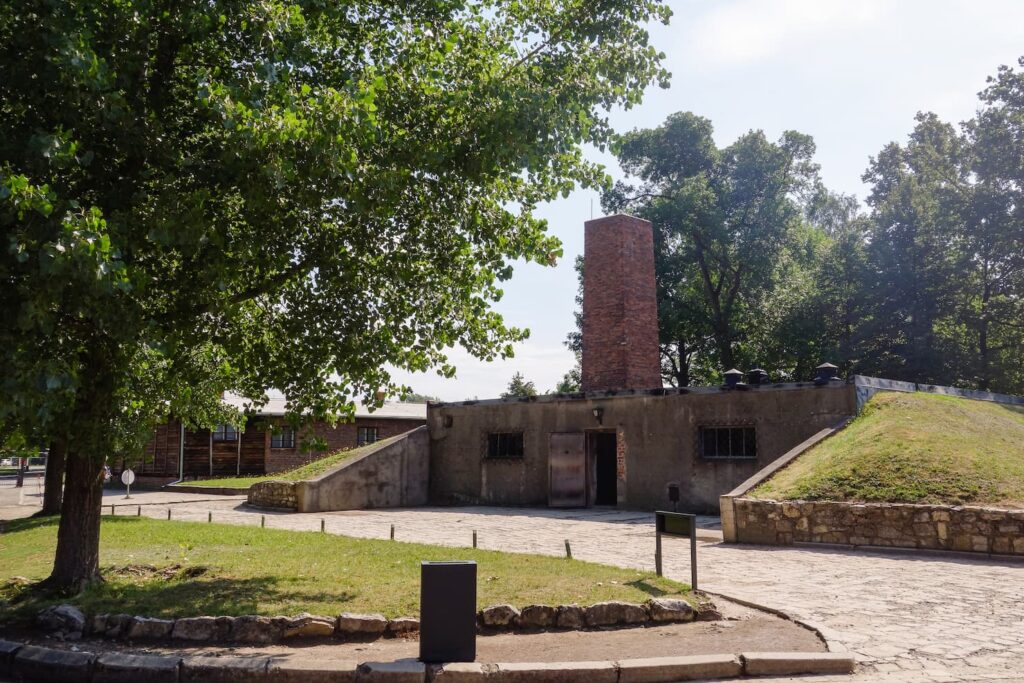
Auschwitz crematorium building: ID 170474675 | Auschwitz © Jean Marc Pierard | Dreamstime.com
In addition, there was also the psychological aspect to consider: the use of gas chambers and ovens gave a diminished sense of direct responsibility to those who committed such atrocities.
Moreover, by concealing the corpses in this way, the regime thought it was covering up all traces of the genocide, thus avoiding the possible judgment of other nations after the war was over.
Initially, temporary gas chambers were set up in buildings located outside Auschwitz I, but when the camp was expanded with the Birkenau complex, they began to think of a kind of “assembly line” to finalize the genocide.
It was at this time that several crematoria were built to burn corpses, connected directly to the gas chambers to speed up operations.
Shortly before the arrival of the Soviets, however, the Nazis attempted to destroy all evidence of extermination, partially or totally damaging even the crematoria.
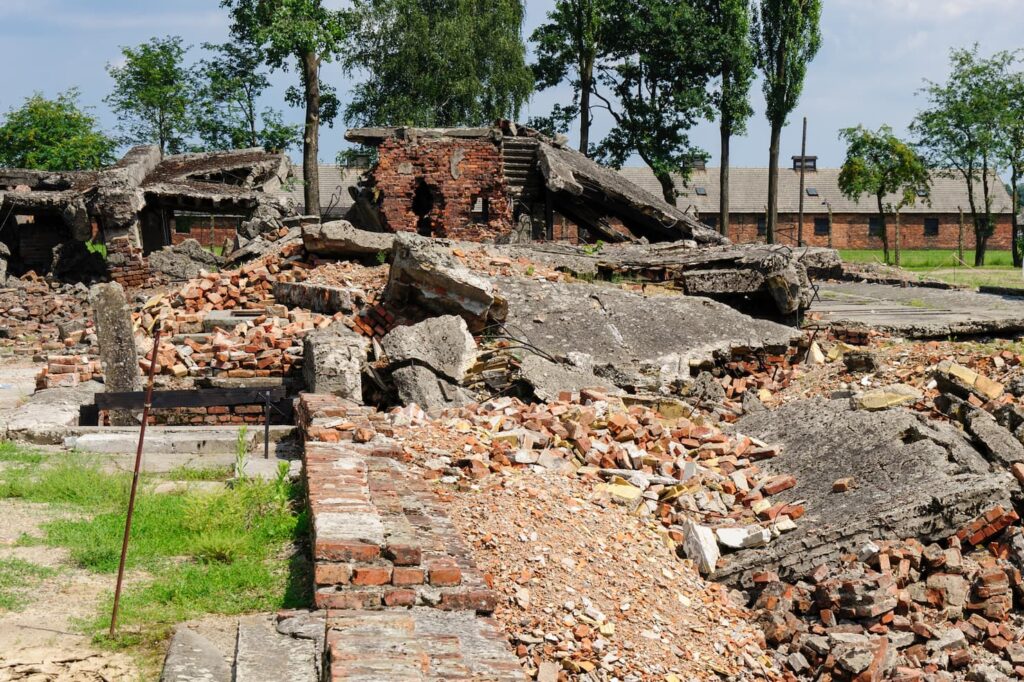
Ruins of Auschwitz Crematorium II, with the collapsed roof of the undressing room in the foreground and the oven and chimney area in the background: ID 68726059 | Auschwitz © Michael Paschos | Dreamstime.com
This is another reason why it is highly recommended to be accompanied by an experienced guide, as only then will it be possible to understand precisely the correct location of the ovens and how they were used

Ticket to Auschwitz-Birkenau (skip the line)
Purchase online. Choose the time of your choice. Visit the prisoner barracks, infamous gas chambers and crematoria on your own.
You can cancel for free up to the day before your visit.
Auschwitz-Birkenau: how the crematoria worked
Deportees arrived at the camp crammed into wagons after long journeys in prohibitive conditions that often resulted in their deaths.
Those who survived the journey were selected by the SS, who arbitrarily and unquestioningly decided who was fit for work and who was considered unfit.
The latter were directly sent to the gas chambers and then to the crematoria.
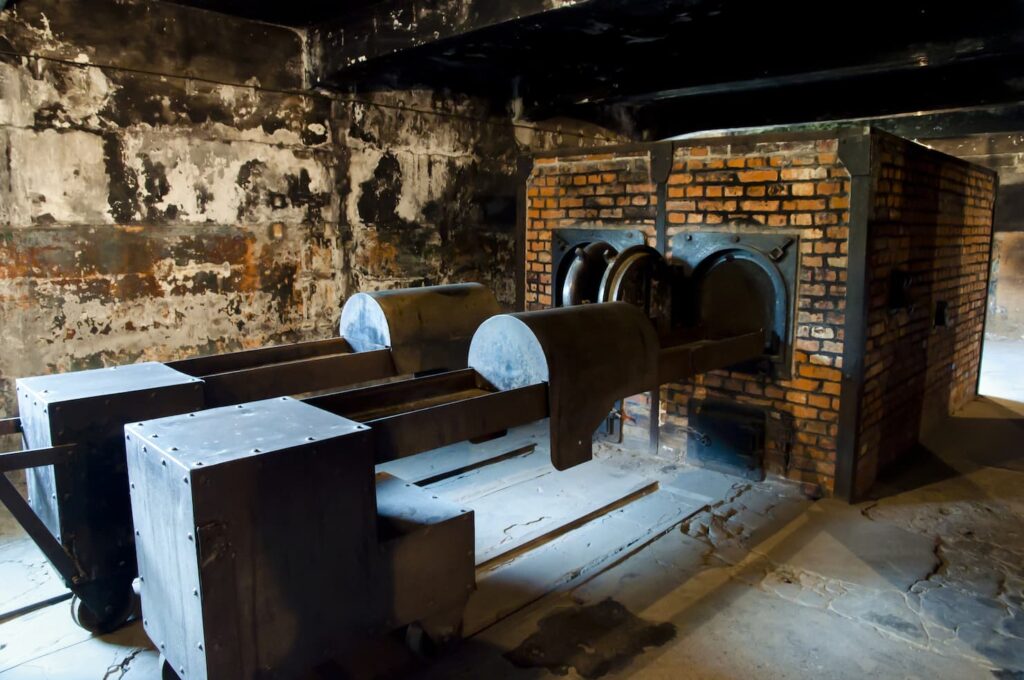
Auschwitz crematoria: ID 90458246 | Auschwitz © Adwo | Dreamstime.com
The toughest task related to these practices was carried out by the Sonderkommando.
These were special teams of inmates, almost always Jews, who had to empty the chambers of corpses.
Equipped with gas masks, they used long metal hooks and proceeded to extract any gold teeth.
They were promised to be spared, but in reality they were periodically killed and then replaced by other inmates.
As mentioned earlier, the facilities were designed as a kind of “assembly line” to exterminate as many people as possible: the ovens were equipped with hoists to take the corpses to the halls where they could be burned.
Each oven could burn more than a thousand corpses in a day.

Chimneys of the buildings where the bodies of Jews who died in the Auschwitz and Birkenau concentration camps in Poland were burned: ID 142701607 | Auschwitz © Thiago Lopes | Dreamstime.com
Frequently asked questions
There were first two facilities called Bunker I and Bunker II, gas chambers without crematoria but equipped with an adjacent pit: both were decommissioned in 1942, replaced by more efficient facilities. From 1943, in fact, four complexes equipped with crematoria and furnaces were put into operation.
Each furnace was able to burn more than 1,000 corpses per day, if we consider that each facility had 5 furnaces and 3 kilns, this means that each facility was able to dispose of more than 5,000 corpses per day.
As for the Auschwitz I camp, two of the three crematoria, reconstructed with original German metal elements, are visible. Of the four crematoria at Birkenau, however, only remnants remain: three of them were detonated by the Germans to erase evidence of extermination, while the fourth was partially destroyed by prisoners during an uprising in 1944. However, five holes can still be seen where some of the ovens were located.
To make extermination as efficient and economical as possible, the Germans set up well-organized complexes at Auschwitz II – Birkenau. Using a system of hoists and sometimes via tracks, corpses were transported directly from the gas chambers to the facilities with crematoria. This was done only after the Sonderkommandos had retrieved everything useful from the victims’ bodies.
Conclusions
Here we have come to the end of our article. Together we have seen how many ovens the Auschwitz-Birkenau camp had and how they worked.
I told you about the role of the Sonderkommandos and the current state of the crematoria. Finally, I answered the most frequently asked questions; however, please feel free to ask others by taking advantage of the comments section below.
For more information related to this topic, I suggest you browse through our other articles on the site, but most importantly let me remind you of the importance of taking advantage of an experienced guide during your visit.
Only with the accompaniment of a true expert will you be able to get the most out of this must-visit, a genuine opportunity for growth and reflection, and it is important not to leave anything out because, as Anneliese Knoop-Graf said, “Forgetfulness is misfortune, while memory is redemption.”




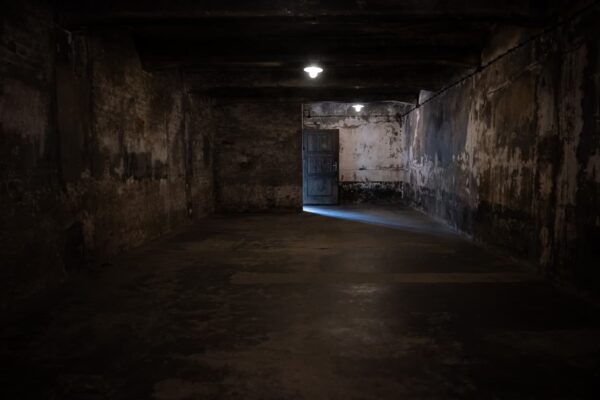
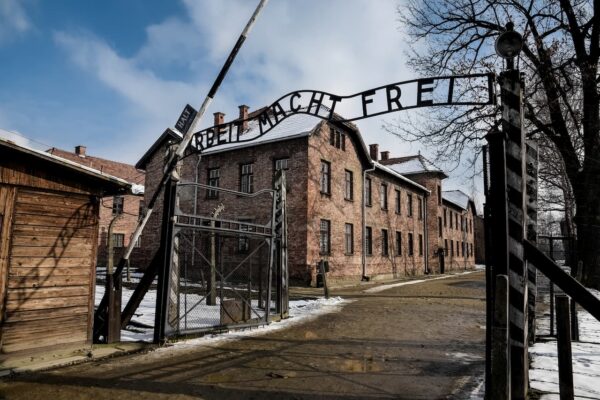
2 Comments. Leave new
See “Auschwitz: Why the Gas Chambers are a Myth” at The Holocaust Historiography Project website. You might find it interesting.
Thanks for the advice, Alan.
Andrea